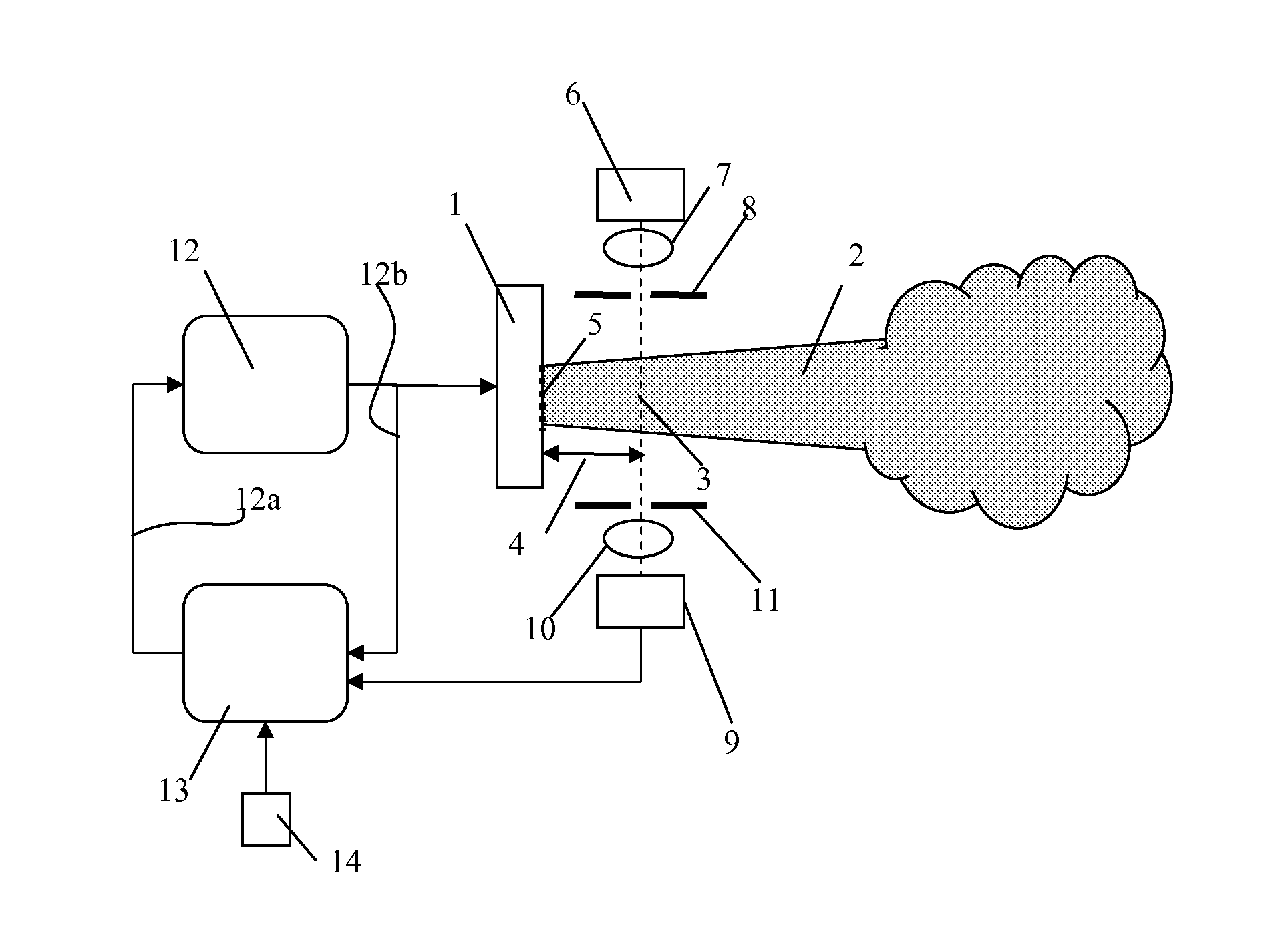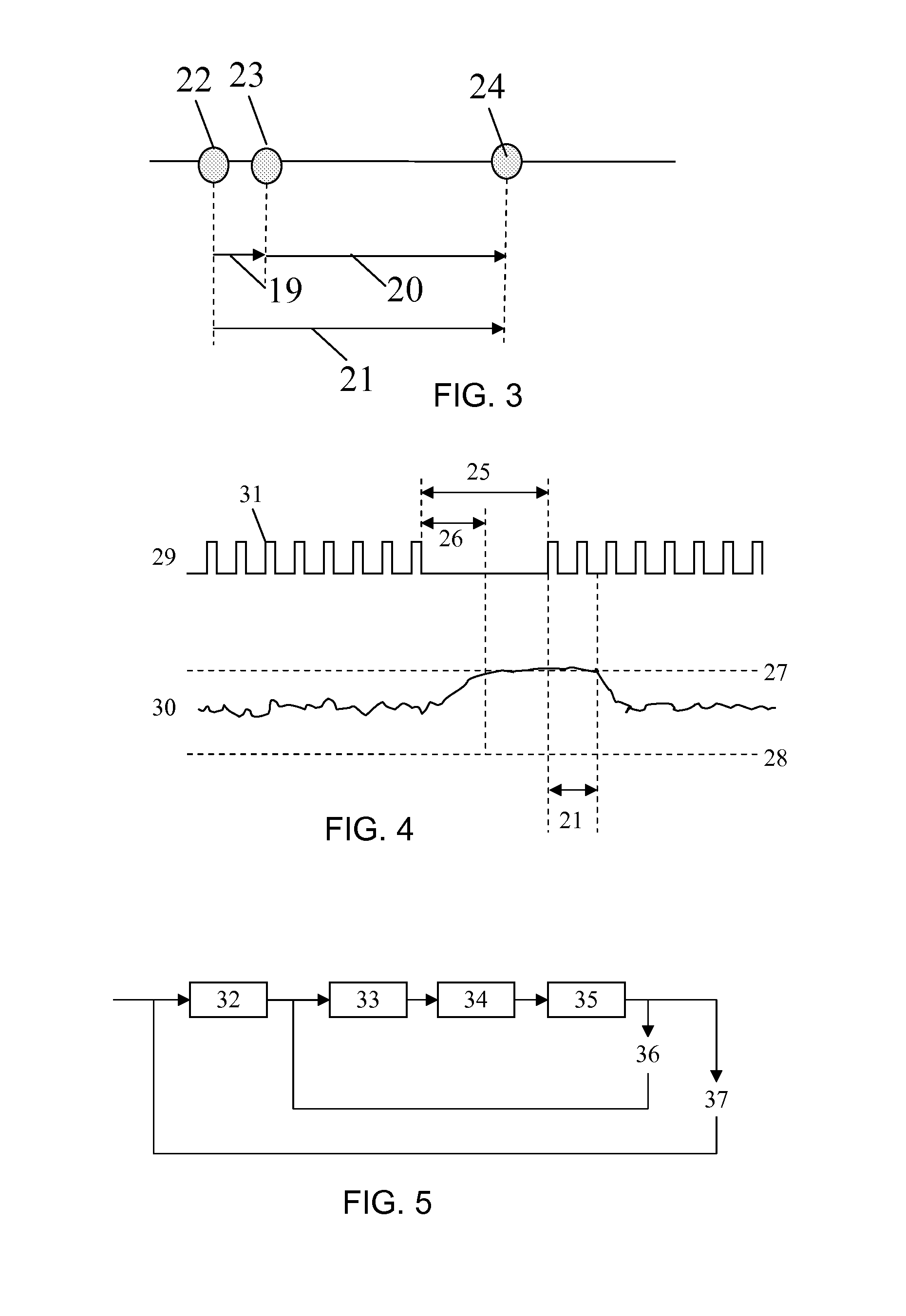Analyais and control of aerosol output
an aerosol and output technology, applied in the field of aerosol output analysis, can solve the problems requiring optical system and air flow measurement system, and not being able to achieve the effect of reducing the reliability of density measuremen
- Summary
- Abstract
- Description
- Claims
- Application Information
AI Technical Summary
Benefits of technology
Problems solved by technology
Method used
Image
Examples
Embodiment Construction
[0041]The invention provides an aerosol generation system in which a conventional aerosol density detector is used. A time delay measurement device is adapted to derive a timing measurement based on a generator drive signal and the aerosol density detector output. The timing measurement is indicative of a time delay between the aerosol generation and the presence of the generated aerosol at the aerosol density detector, which is at a known distance from the aerosol generator. The timing measurement (which is related to the aerosol velocity) and the aerosol density are combined to derive an aerosol output rate, i.e. the mass transport rate. The aerosol output rate can be used as part of a feedback control mechanism.
[0042]FIG. 1 shows a nebulizer system of the invention, with a piezoelectric driven aerosol generation system 1 that generates aerosol 2 using a mesh 5. An optical system generates a beam 3 at distance 4 from the mesh 5. The optical system consists of a light source 6 with...
PUM
| Property | Measurement | Unit |
|---|---|---|
| volume | aaaaa | aaaaa |
| time delay measurement | aaaaa | aaaaa |
| time delay measurement | aaaaa | aaaaa |
Abstract
Description
Claims
Application Information
 Login to View More
Login to View More - R&D
- Intellectual Property
- Life Sciences
- Materials
- Tech Scout
- Unparalleled Data Quality
- Higher Quality Content
- 60% Fewer Hallucinations
Browse by: Latest US Patents, China's latest patents, Technical Efficacy Thesaurus, Application Domain, Technology Topic, Popular Technical Reports.
© 2025 PatSnap. All rights reserved.Legal|Privacy policy|Modern Slavery Act Transparency Statement|Sitemap|About US| Contact US: help@patsnap.com



